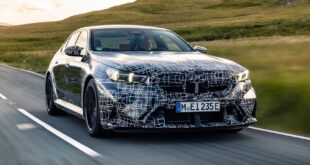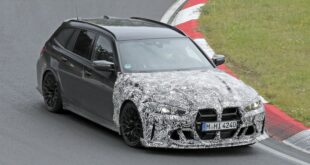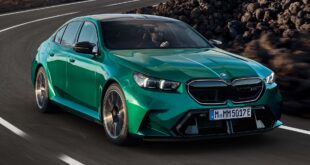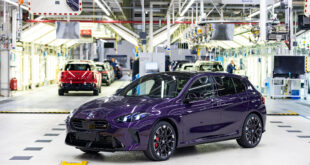Here’s an excerpt of the BMW i8 Review by Top Gear:
But I’m worried about cornering, what with the mashup of different power sources for different axles.
Ah yes. Well, go into most corners and your doubts will be vaporised. It’s wonderful. There’s barely any roll, the steering is terrific, and there’ a wonderful agility – it’ll take left-right-left flicks like a lizard. In longer bends you can come on and off the throttle and tuck the nose in a little, or edge the tail out very slightly under power. It feels consistent and confident. Lovely.
Very long, slow, second-gear corners can trip it up though. If you go in too fast or under brake, and get understeer, the i8 seems to get a little confused and won’t let you have full power for an annoying interlude. But if you get your entry speed right, then get early on the power, it feels just fine. I think there might still be a front-rear calibration issue in second gear, too. But what do I know – this is such a brainy car you never really know how it’s doing what it’s doing.
…
Er, calibration? Explanation please.
The engineers say the hardest job on the i8 wasn’t the new materials or the weight or body. It wasn’t even the power units per se. It was getting them to work together, getting everything smooth and maintaining the right variable torque split in corners. Imagine, you change throttle position. The petrol engine reacts, but with a bit of a delay as turbos do. So the electric front motor, and the auxiliary rear motor, have to be controlled to match that transient state, while maintaining the target front-rear torque split to keep the cornering dynamics right. Whatever of the six gears the petrol engine is in. However much grip each wheel has. Mind boggling.
Best not to think too hard. Just to let it get on with it, and enjoy the results, which except in that one tight-bend understeer situation, are fine. Anyway, the engineers say they’re still working on a stickier front tyre compound, which should help too.
…
So does it cling on like a 911?
Not quite, but close. I found the limit easy to reach. But then that wasn’t because it’s a low limit, more that the car is confident and friendly and generally transparent as it gets there. And given the complexity that’s remarkable.
…
How’s the chassis itself?
Brilliant actually. The fundamentals are present: a very low C of G, all significant mass inside the wheelbase, and 53 percent on the rear, plus a palpably stiff body. You sit low, so you feel little rock or pitch. The steering is spot-on in ratio and progression, and gives you a good feel for the tyres’ effort. Springing is beautifully judged, supple enough to be acceptable in grumpy urban running, but firm enough for the dampers to stick their teeth into when you’re pressing on. In twisty and bumpy sections taken fast, there’s no float to speak of and the dampers check body motions with terrific resolve, and yet they don’t make things harsh when you’re wafting. They’re adaptive, but feel very natural. There’s also remarkably little tyre roar, thanks probably to their narrowness, which adds to the refinement and matters a lot in electric running when there’s no engine noise to drown the tyres out.
 BMW.SG | BMW Singapore Owners Community The Ultimate BMW Community – Established Since 2001
BMW.SG | BMW Singapore Owners Community The Ultimate BMW Community – Established Since 2001














